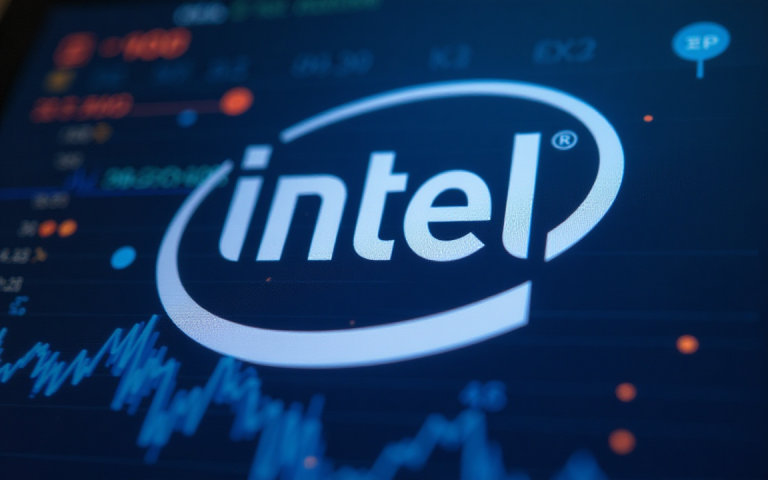Shares of Intel Corporation fell sharply on Friday, down 5.8% in Frankfurt and 4.6% in US after-hours trading, after the chipmaker warned of deeper third-quarter losses than expected and outlined sweeping plans to cut more than 25,000 jobs.
The restructuring comes as new CEO Lip-Bu Tan attempts to steer the embattled semiconductor giant through one of the most turbulent periods in its history.
Intel reported a $2.9 billion net loss for the second quarter, driven in part by restructuring charges tied to the layoffs and cost-cutting measures.
While quarterly revenue came in slightly ahead of forecasts at $12.9 billion, the company projected further losses in the current quarter with revenue expected to range between $12.6 billion and $13.6 billion.
Intel to execute massive layoffs and a restructuring plan
The company revealed plans to shrink its workforce to 75,000 by the end of 2025, down from nearly 109,000 employees at the end of 2024.
Intel said this 22% reduction will come through layoffs, attrition, and other means.
The move follows last year’s cut of over 15,000 jobs, and brings the total number of positions eliminated over the past two years to more than 40,000.
“I know the past few months have not been easy,” Tan wrote in a letter to employees.
“We are making hard but necessary decisions to streamline the organization, drive greater efficiency and increase accountability at every level of the company.”
Intel also confirmed it is pulling the plug on plans to build factories in Germany and Poland, slowing down construction of its large manufacturing site in Ohio, and consolidating its operations in Costa Rica, shifting activity to Vietnam and Malaysia.
Pressure mounts on CEO Lip-Bu Tan to deliver turnaround
Lip-Bu Tan, who took the helm in March, is tasked with reversing Intel’s long decline in a rapidly changing semiconductor landscape.
The company, once a dominant force in PC chip manufacturing, has fallen behind rivals like Nvidia, AMD, and Taiwan Semiconductor Manufacturing Co. as demand surges for AI chips and advanced foundry services.
“There are no more blank checks,” Tan wrote in a memo to staff. “Every investment must make economic sense.”
He emphasized Intel’s focus on building a “more financially disciplined foundry,” while promising to restore profitability and long-term shareholder value.
Intel has already trimmed its 2025 operating expense target to $17 billion, with plans to bring that down further to $16 billion by 2026. Tan said on Thursday the company remains on track to meet those goals.
Analysts’ views on Intel stock’s long term outlook
Wall Street remains wary of Intel’s future.
Bernstein analysts, led by Stacy Rasgon, said the company’s PC business may receive short-term support from trade tariff dynamics, but questioned whether that’s enough to drive investor interest.
“We doubt anyone is going to buy the stock for that potential,” they said.
The firm also flagged worsening structural headwinds, and raised concerns about Intel’s broader strategy and future direction.
In a client note published Wednesday, analysts at BofA Securities acknowledged the ongoing challenges to Intel’s competitiveness but pointed to some potential bright spots.
They highlighted a “faster ramp of 18A,” the advanced chip-manufacturing process that Intel heavily invested in under former CEO Pat Gelsinger, as a possible catalyst for recovery.
The analysts also noted that an upcoming enterprise PC refresh cycle could provide short-term upside, helping to offset the company’s current weak outlook.
While maintaining a neutral rating on Intel shares, they cited the company’s turnaround potential.
However, they cautioned that this is tempered by continued pressure from rivals like Advanced Micro Devices (AMD) and Nvidia, especially in the CPU market and due to Intel’s lack of a competitive AI accelerator lineup.
The post Intel shares slide as deeper losses, major job cuts spook investors appeared first on Invezz

